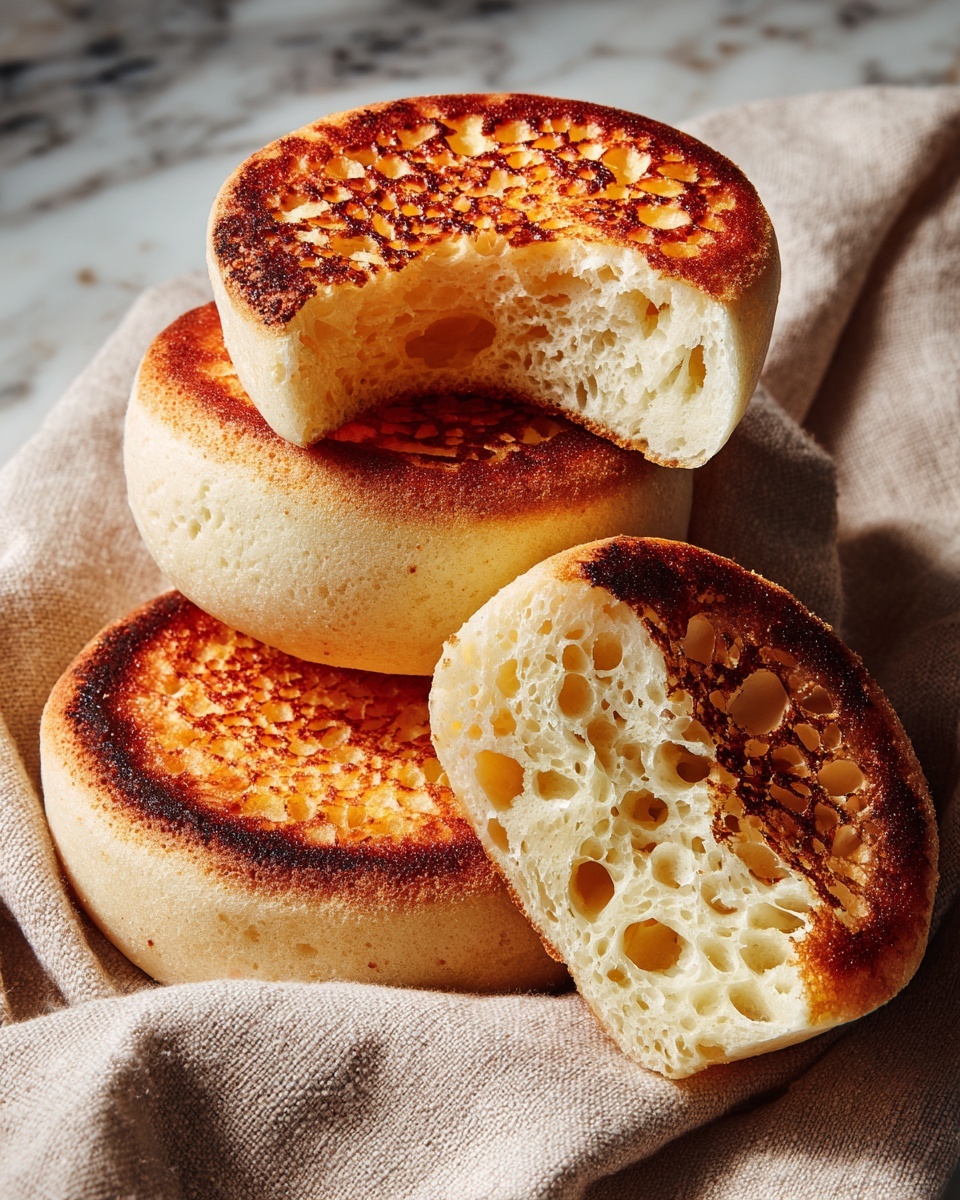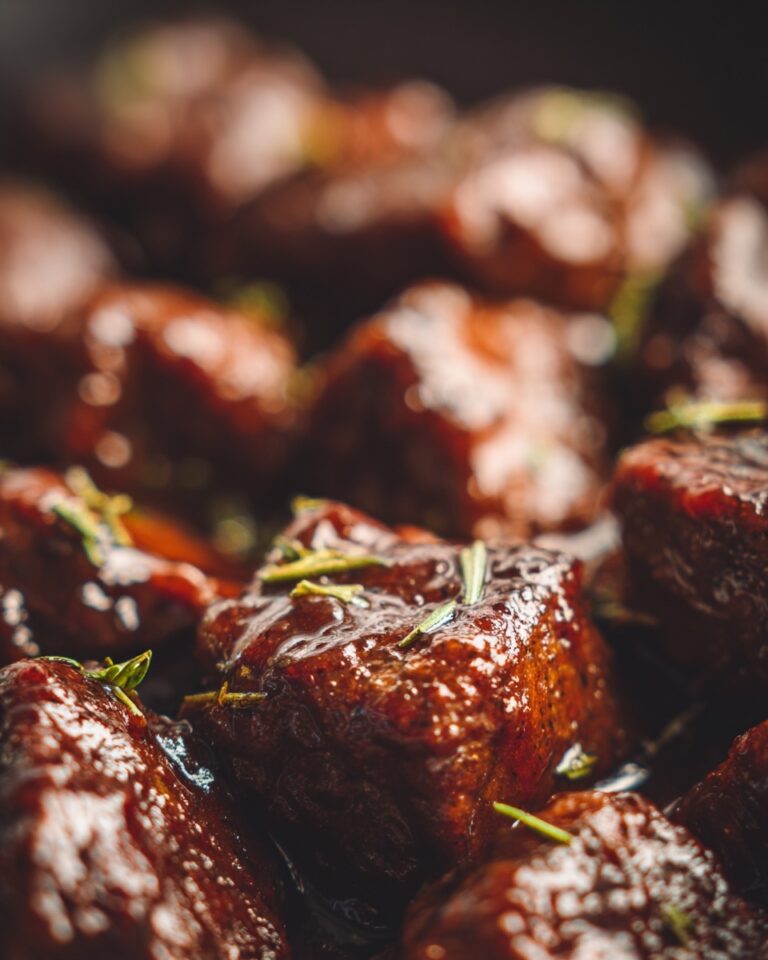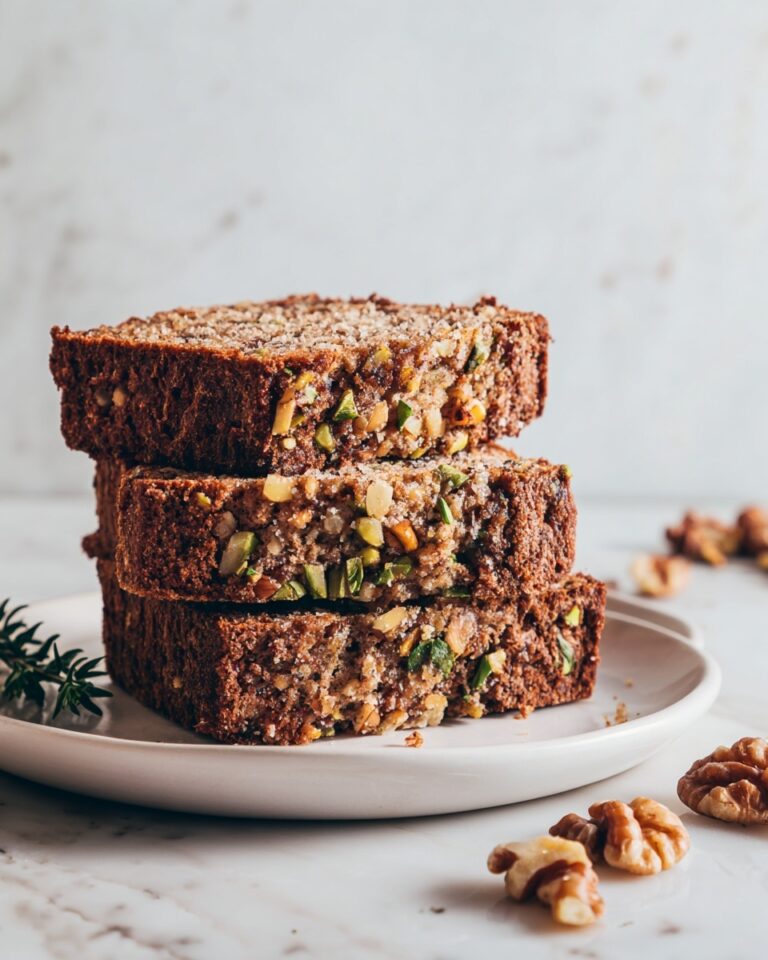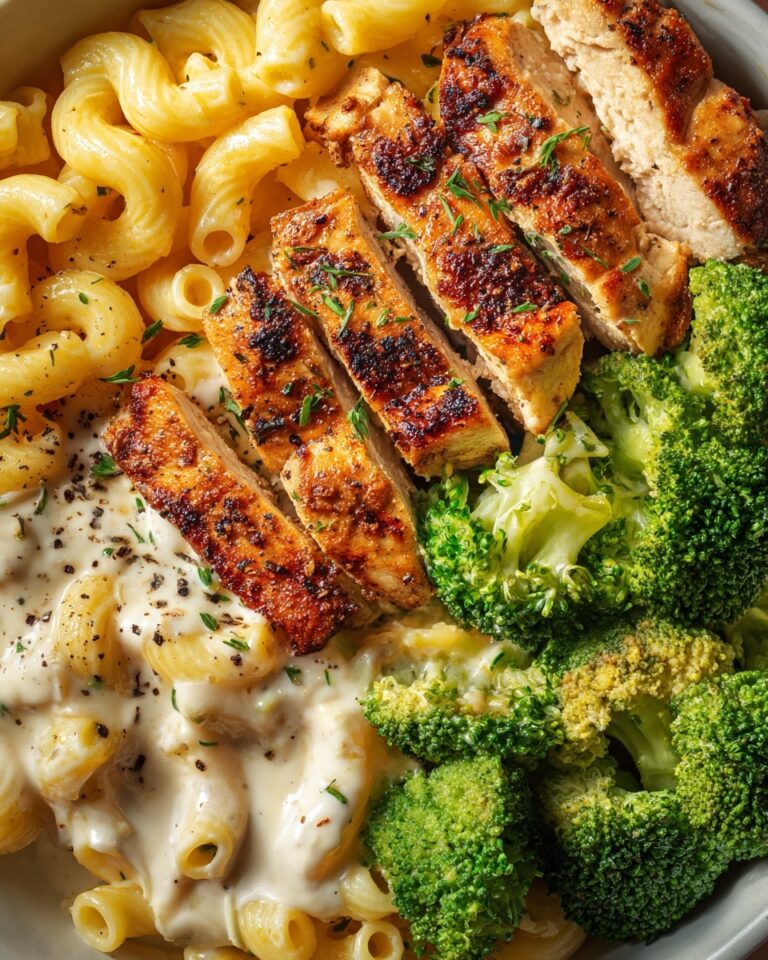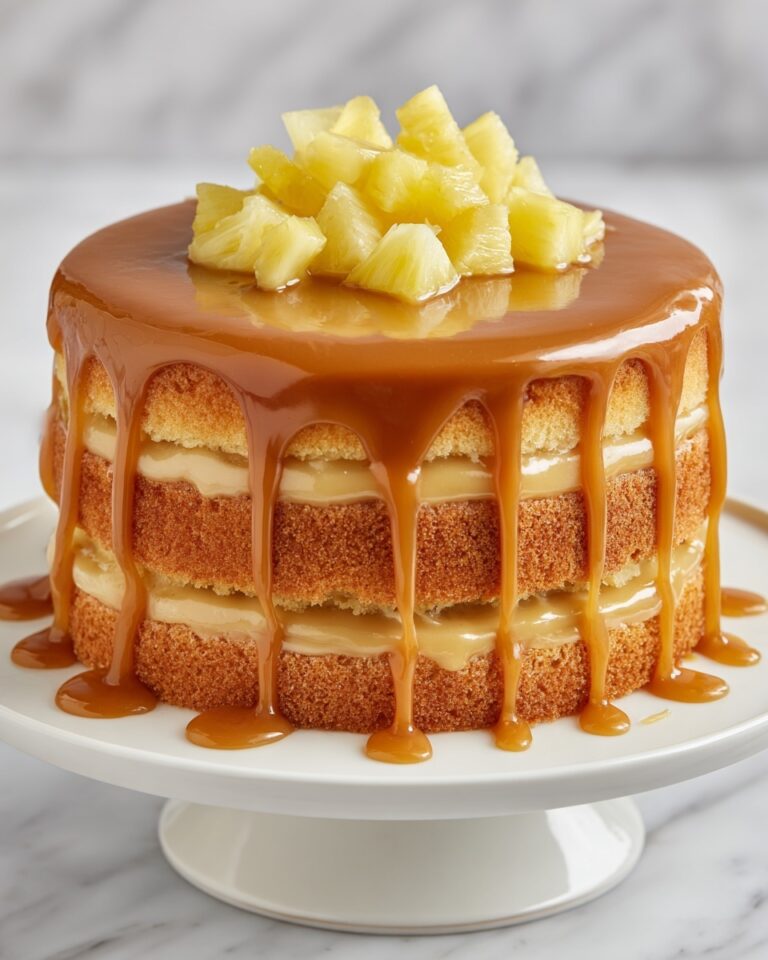There’s something undeniably magical about homemade English muffins, especially when made from a recipe that reduces waste and maximizes flavor like the Sourdough Discard English Muffins Recipe. These muffins boast that perfectly soft, chewy texture paired with the signature nooks and crannies that soak up butter and jam like a dream. Using sourdough discard adds a subtle tang and depth, turning an otherwise everyday breakfast into an extraordinary experience. Whether you are a sourdough enthusiast or just ready to try baking with discard, this recipe is a warm, welcoming kitchen adventure you’ll want to revisit again and again.
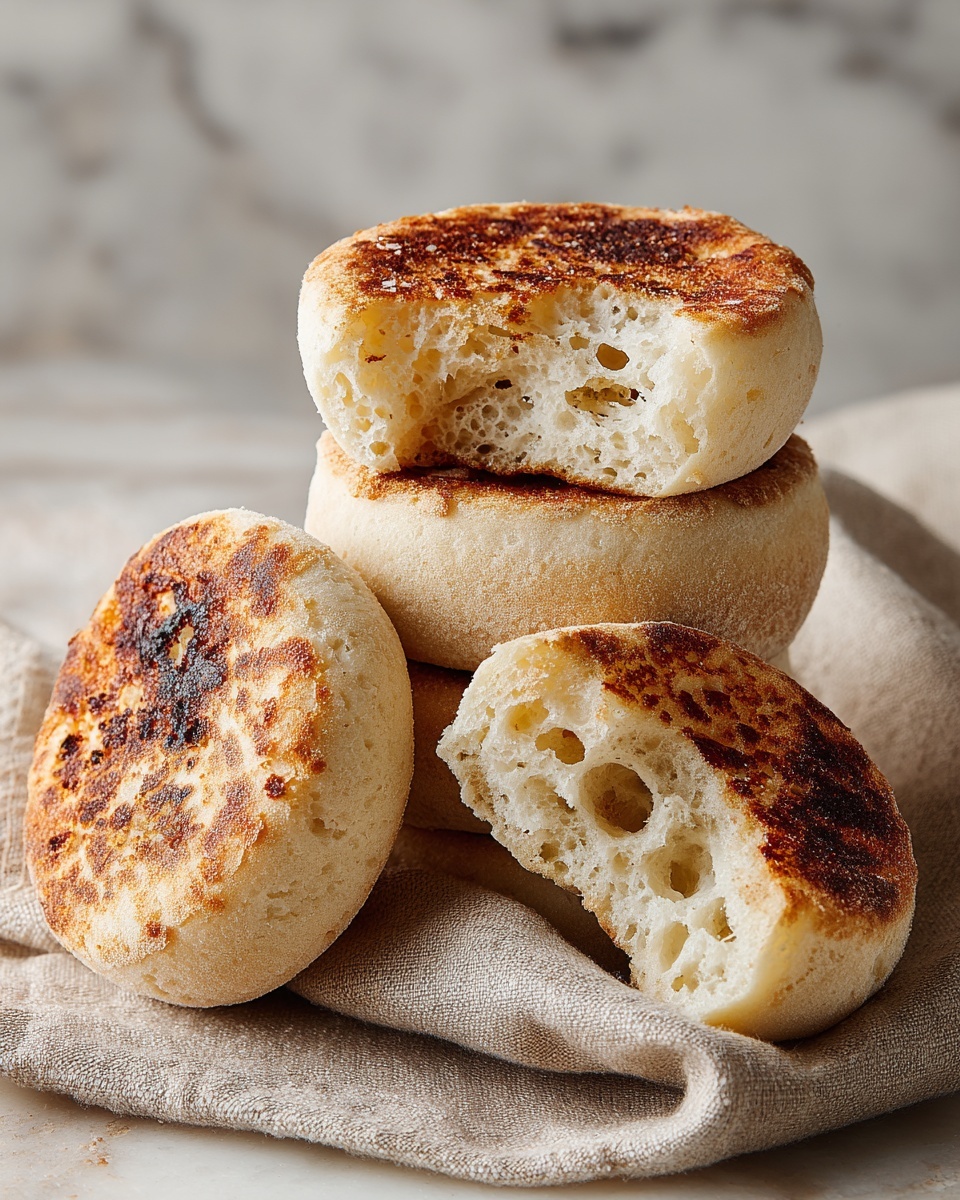
Ingredients You’ll Need
The beauty of the Sourdough Discard English Muffins Recipe lies in its simplicity—the ingredients are straightforward but each one plays a vital role in developing texture, flavor, and that classic golden crust we all love.
- Whole milk (1 cup, warmed to 110°F): Adds richness and helps activate the yeast for a light crumb.
- Unsalted butter (2 tablespoons, melted): Enriches the dough with tenderness and a subtle buttery flavor.
- Brown sugar (2 tablespoons): Feeds the yeast and contributes a mild sweetness and depth of color.
- Active dry yeast (1 teaspoon): Boosts the rise to ensure a fluffy texture and beautifully aerated muffins.
- Sourdough discard (½ cup): Brings that unique sourdough tang and richness to the dough, making use of what might otherwise be wasted.
- Bread flour (2 ½ cups): Provides the high protein structure needed for chewy, chewy nooks and crannies.
- Kosher salt (2 teaspoons): Balances the sweetness and enhances all other flavors without overpowering.
- Cornmeal or semolina flour (for dusting): Prevents sticking and adds a delightfully crunchy bottom crust.
How to Make Sourdough Discard English Muffins Recipe
Step 1: Mix Ingredients
Begin by combining the warm milk, melted butter, sourdough discard, brown sugar, and yeast in a large mixing bowl. Let it rest for a few minutes, allowing the yeast to wake up and the mixture to get bubbly and alive. Next, add the bread flour and kosher salt, mixing with a dough whisk or wooden spoon until everything comes together into a slightly sticky dough. This initial melding of ingredients sets the stage for fluffy muffins with tender interiors.
Step 2: Let Dough Rise
Cover your bowl and let the dough rise in a warm spot until it doubles in size—this usually takes between 60 to 90 minutes. The magic of fermentation happens here, allowing the sourdough discard and yeast to work together to develop flavor and airy texture. For an extra depth of flavor, you can refrigerate the dough overnight at this point. Trust me, the patience pays off beautifully!
Step 3: Prepare Dough for Shaping
Once your dough has risen, transfer it onto a floured surface and gently press or roll it out to about one inch thick. Using a biscuit cutter or a sturdy glass, cut out rounds. Don’t worry about scraps—just stack, re-roll, and cut again until you have around 9 to 10 muffins. Feel free to adjust thickness depending on your muffin size preference. This step is fun because you get to shape the future stars of your breakfast plate.
Step 4: Shape Muffins and Second Rise
Place your muffin rounds onto a baking sheet generously dusted with cornmeal or semolina flour. Dust the tops with cornmeal as well to get that classic texture. Cover loosely and let them rise for about an hour, or two if they were refrigerated, until puffed and light. The second rise is crucial—it creates that airy structure that separates your muffins from store-bought.
Step 5: Cook Muffins
Heat an electric skillet to 300°F or use a heavy skillet on medium-low heat. Place the muffins in the skillet, making sure to leave space between each. Cover and cook for 5 minutes, then flip, cover, and cook another 5 minutes. Lower the heat to around 250°F and keep flipping several times to ensure even cooking through and a golden crust. Alternatively, after flipping, pop the muffins in a 350°F oven for about 10 minutes. You’re aiming for an internal temperature between 195 and 200°F—the perfect doneness for melt-in-your-mouth texture.
Step 6: Cool and Serve
Transfer the muffins to a cooling rack and let them come to room temperature. For that iconic craggy texture, use a fork and your fingers to gently pry the halves apart before toasting. This open crumb is what makes these muffins perfect for soaking up butter, honey, or any favorite breakfast topping.
Step 7: Alternative Shaping Option
If you prefer fewer leftovers and a quicker process, divide the dough into 8 to 12 equal pieces, shape each into a ball, and gently press into disks. This method is especially great for busy mornings when you want delicious homemade muffins without the fuss of rolling and cutting.
How to Serve Sourdough Discard English Muffins Recipe
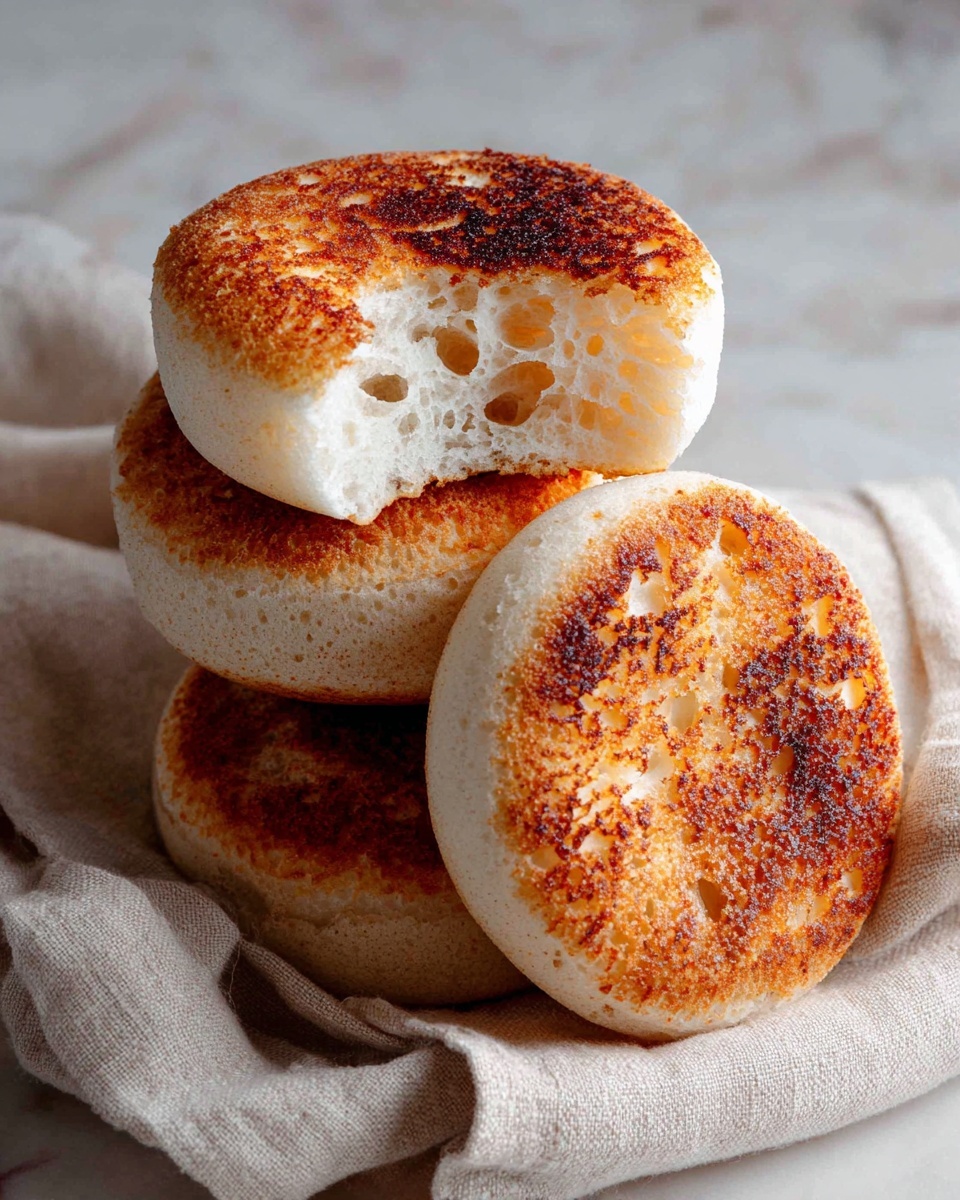
Garnishes
Enhancing the natural flavor of your Sourdough Discard English Muffins Recipe is all about toppings and spreads. Classic butter and jam will always be beloved, but don’t shy away from rich cream cheese, tangy marmalade, or even a scoop of nut butter. A sprinkle of cinnamon sugar on warm toasted muffins also feels like a cozy hug.
Side Dishes
Pair these muffins with crispy bacon, scrambled eggs, or fresh fruit to build a balanced breakfast. They also make an excellent companion to soups or stews when served as a bread alternative. Their ability to soak up sauces is truly remarkable and adds that satisfying, hearty element to any meal.
Creative Ways to Present
Why not turn your Sourdough Discard English Muffins Recipe into mini sandwiches with avocado, smoked salmon, or egg salad? They also work as charming bases for bruschetta-style toppings or tiny open-faced sandwiches for entertaining. Their sturdy but tender texture gives you so many creative ways to impress your friends and family.
Make Ahead and Storage
Storing Leftovers
If you have any leftover muffins (which is rare, but it happens), keep them in an airtight container at room temperature for up to two days. This keeps them soft while maintaining their delightful texture. For longer storage, refrigeration is also viable but may slightly dry them out.
Freezing
These muffins freeze beautifully. Wrap each cooled muffin individually in plastic wrap, then store them in a freezer bag. They keep well for up to three months. When you’re ready to eat, just thaw at room temperature or toast them straight from frozen.
Reheating
To bring your English muffins back to life, toast them lightly or warm them in a skillet over medium heat. This revives their signature crisp crust while keeping the interior murmurously soft, ready to be slathered with your favorite spread.
FAQs
Can I use regular all-purpose flour instead of bread flour?
Absolutely! While bread flour gives a chewier texture due to its higher protein content, all-purpose flour will still produce tasty muffins with a slightly softer crumb. It’s a fine substitution if that’s what you have on hand.
What if I don’t have sourdough discard? Can I skip it?
You can omit the sourdough discard and still make English muffins, but the unique tang and depth it provides will be missing. To mimic the flavor, a small amount of yogurt or buttermilk can be added, though the texture may differ slightly.
How do I know when the muffins are fully cooked?
Internal temperature is the best indicator—aim for about 195 to 200°F. Visually, they should be golden brown with a firm feel and should sound hollow when tapped on the bottom.
Can I make these muffins vegan?
With some adjustments, yes! Substitute the milk and butter for plant-based alternatives and use a sugar that fits your preferences. The texture may change a bit, but you’ll still enjoy a delicious homemade muffin.
What causes the classic “nooks and crannies” in English muffins?
It’s a combination of the dough’s hydration, fermentation time, and cooking method. The yeast fermentation creates air pockets, and cooking on a griddle or skillet with a lid helps develop that unique crumb structure we adore.
Final Thoughts
This Sourdough Discard English Muffins Recipe is truly a treasure for bakers who love combining tradition with sustainable practices. It turns simple ingredients and sourdough leftovers into something spectacular and comforting. Give it a try—you’ll be amazed at how this humble recipe elevates your breakfast game and brings joy with every buttery, craggy bite.
Print
Sourdough Discard English Muffins Recipe
- Prep Time: 20 minutes
- Cook Time: 40 minutes
- Total Time: 1 hour 40 minutes to 2 hours 40 minutes (including rising time, not including optional overnight refrigeration)
- Yield: 9-10 muffins
- Category: Breakfast
- Method: Stovetop
- Cuisine: American
Description
This Sourdough Discard English Muffins recipe transforms sourdough discard into delicious, homemade English muffins with a perfectly tender crumb and classic nooks and crannies. Using a combination of bread flour, warm milk, butter, and active dry yeast, the dough rises, is shaped, and then cooked on a skillet to achieve a golden crust and soft, airy interior. Ideal for breakfast or brunch, these versatile muffins can be toasted and topped with butter, jam, or your favorite spreads.
Ingredients
Wet Ingredients
- 1 cup whole milk (240 grams), warmed to 110°F
- 2 tablespoons (28 grams or 1 ounce) unsalted butter, melted
- ½ cup (140 grams) sourdough discard
Dry Ingredients
- 2 tablespoons (30 grams) brown sugar (or sweetener of choice)
- 1 teaspoon (3 grams) active dry yeast
- 2 ½ cups (300 grams) bread flour
- 2 teaspoons (6 grams) kosher salt
For Cooking
- Cornmeal or semolina flour (for dusting)
Instructions
- Mix Ingredients: In a large mixing bowl, combine the warm milk, melted butter, sourdough discard, brown sugar, and active dry yeast. Let the mixture sit for a few minutes to activate the yeast. Then add the bread flour and kosher salt. Mix thoroughly with a dough whisk or wooden spoon until a slightly sticky dough forms and all ingredients are well combined.
- Let Dough Rise: Cover the bowl with a clean towel or plastic wrap and let the dough rise in a warm place until it doubles in size, approximately 60-90 minutes. For enhanced flavor, optionally refrigerate the dough overnight at this stage to develop more complex fermentation.
- Prepare Dough for Shaping: Once risen or removed from the refrigerator, turn the dough onto a floured surface and gently press or roll it out to about 1-inch thickness.
- Shape Muffins: Using a biscuit cutter or a jar/glass, cut the dough into rounds about 9-10 muffins depending on thickness. Gather and stack scraps to re-roll and cut additional rounds if needed. Alternatively, divide the dough into 8-12 equal pieces, roll each into a ball, then flatten into disks to simplify shaping and minimize scraps.
- Second Rise: Place the cut muffins on a pan generously dusted with cornmeal or semolina flour. Dust the tops with cornmeal as well. Cover and let the muffins rise until puffy and light, about 1 hour at room temperature, or about 2 hours if the dough was chilled.
- Cook Muffins: Preheat an electric skillet to 300°F or use a heavy skillet over medium-low heat. Arrange the risen muffins in the skillet leaving space between them. Cover and cook for 5 minutes, then flip and cook for another 5 minutes covered. Reduce heat to about 250°F if browning too quickly. Flip the muffins a few more times until they reach an internal temperature of 195-200°F. Alternatively, finish the cooking process by baking them in a preheated 350°F oven for about 10 minutes depending on thickness.
- Cool and Serve: Transfer the cooked muffins to a cooling rack and allow them to cool to room temperature. For the best texture and to reveal the craggy nooks and crannies, split the muffins apart with a fork and your fingers before toasting and serving.
Notes
- The overnight refrigeration step is optional but enhances flavor through slow fermentation.
- Use cornmeal or semolina flour liberally when shaping and cooking to prevent sticking and add texture.
- Adjust cooking temperature as needed to avoid burning the muffins before they are fully cooked internally.
- Fork-splitting the muffins before toasting creates the classic texture and helps jams and butter soak in.
- To make this recipe vegan, substitute milk with plant-based milk and butter with a vegan alternative, and ensure the yeast is vegan-friendly.

